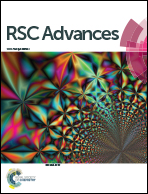Determination of anisomycin in tissues and serum by LC-MS/MS: application to pharmacokinetic and distribution studies in rats
Abstract
A selective, sensitive and fast method for extraction, identification and quantification of multifunctional drug anisomycin in various tissues and serum, based on liquid chromatography-tandem mass spectrometry, was developed, optimized and validated. The method was validated according to the FDA guidelines and generally demonstrated good selectivity, accuracy, precision, and stability of the analyte. In the optimized method, high extraction efficiency was achieved for tested tissues (heart, brain, spleen, kidney, liver and femoral muscle) and serum. The obtained values of lower limits of quantification (LLOQ, 1.0–11.0 ng g−1) and limits of detection (0.3–3.3 ng g−1) indicated that the method was suitable for determination of trace levels of anisomycin in the complex matrices. The method was linear (R2 ≥ 0.990) in the tested concentration range (LLOQ–2500 ng g−1). The developed method was successfully applied in the first study on in vivo pharmacokinetics and distribution of anisomycin in tissues and serum of Wistar albino rats following subcutaneous injection (150 mg kg−1). The peak concentration in most tissues was achieved within 3 h after injection. The highest anisomycin concentration was found in the brain and the lowest concentration was found in the serum.


 Please wait while we load your content...
Please wait while we load your content...